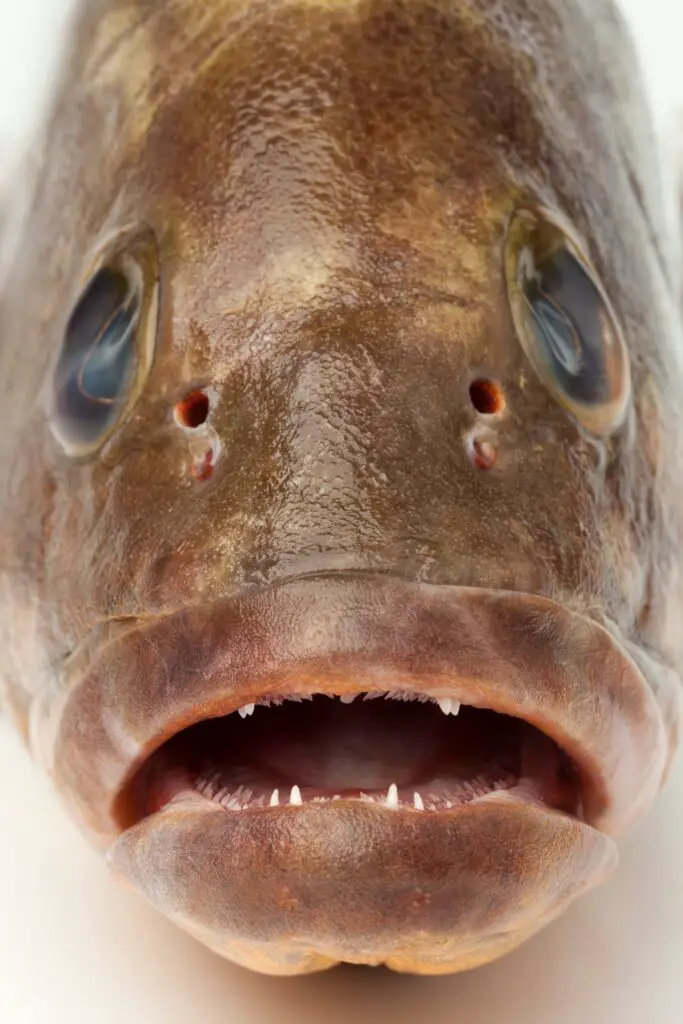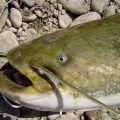There are various types of groupers, and they do have teeth. While the use of their teeth is different than other species, their unique positioning of teeth is what makes them special. Groupers come in various types and kinds and are fascinating underwater creatures. However, due to their fascinating shape and extraordinary asymmetry, people often get confused about what type of creature this is. A common question to relate to these groupers is whether they have teeth or not. While their asymmetry gives them a look of a swallowing animal, is it the case here?
Do Groupers Swallow or Bite their Prey?
No matter the unique shape and asymmetry groupers do have teeth within their heads. They have several rows of very short-sized teeth that they can use from time to time. However, when it comes to its prey, they rarely use their short inner teeth as they usually do not need them.
They can easily weigh up to 800 pounds and even more in some regions. However, when hunting its prey, including big targets such as sharks, they often go with swallowing them whole instead of biting. With so much power, they are famously known to swallow prey easily.
How Many Teeth do Groupers Have?
While they don’t have a lot of teeth when you look at the edges of their jaws, some teeth exist aside from that. They have many crushing tooth plates within their pharynx that they mostly use to eat their smaller prey. While most of the time, groupers swallow prey, they also use their teeth to eat octopuses, fishes, and various crustaceans habitually.
They don’t have a lot of teeth to consider but only some rows and layers of teeth that mostly work as a hook to wound and isolate their prey with ease. These teeth are located in the mouth’s lower part, making the escape of the creature way more difficult once caught.
Not only that, but these teeth are also located in a pattern that is considered very striking despite its weak nature. This means the more struggle a target does to free itself from the grasp of these teeth, the more wounded it gets. Due to this advantage, groupers have been successfully hunting larger sharks and easily swallowing them once they are captured. While most hunting relies on swallowing, its teeth play an important role in hunting down larger and more challenging prey.

Do Grouper Use Teeth for Attack?
While most kinds of groupers are considered quite an introverted species by the majority of researchers, types like large Goliath groupers are famously known to stalk and attack at various occasions. While hunting in its predatory way, the groupers are known to have this approach when feeding on crustaceans. Most of the time, these are spiny lobsters, crabs, shrimps, and other fish. Not to mention they also have a knack for hunting stingrays, parrotfish, and octopuses. Sometimes, they even attack challenging targets, such as young sea turtles, using their teeth.
They do this by slowly stalking, suddenly ambushing the prey, and catching it with quick and amazing power using the snap of its jaws. Once caught, the sharp layers of teeth are used to seize its prey and block all the possible chances of escape. While most of the time, the attack is so sudden it swallows most of its prey as a whole. While other times, its unique layers of teeth assist the groupers in taking down challenging targets.
How do Teeth Help Groupers in Capturing Bigger Prey?
Researchers have widely noted groupers stalk and attack human divers in the same and successfully ambushing way. When it comes to the large types and kinds of this species, humans must treat them with caution. Groupers have attacked humans from time to time, and their teeth have been very helpful most of the time. However, when hunting humans, since the chances of swallowing are low, the groupers are more aggressive instead of stalking.
They are known to aggressively chase divers from within their region to various distances of meters until they have caught their prey. Furthermore, due to its strong structure and grasping teeth, it is even more difficult to get rid of it once you’re caught. Therefore, for bigger targets such as human divers, groupers largely rely on their layers of teeth for success.
How Many Rows of Teeth Do Groupers Have?
While we already know that despite its unique asymmetry, this creature has various rows and layers of teeth within its lower area of jaw. The Goliath grouper has about three or four layers of rows of these sharp pointed teeth located in the lower jaw area. While the teeth are not very strong and are considered for hunting, it is very helpful in capturing the prey and preventing its escape. These layers of weak canine teeth also give these groupers a unique identification from other groupers worldwide. Furthermore, this presence of teeth makes it even more of a threat for smaller and larger creatures, including humans.
Conclusion
Groupers are surely fascinating underwater creatures that researchers have been observing for a long time. However, for most, the actual thing to notice about them is their unique presence of teeth. Despite everything we have discussed in this article, it is clear that the teeth of groupers play an important part in hunting life. Most of the work is done for this predator in swallowing its prey. However, to reach the point where it can swallow its prey, it is the teeth of this creature that help him achieve that goal with ease.












Pingback: What is the Difference Between Grouper and Yellowfin Tuna? | Reel Fishing Guru
Pingback: What is a Yellowfin Grouper? | Reel Fishing Guru
Pingback: What Is a Coney Grouper? | Reel Fishing Guru
Pingback: What Is the Difference Between a Grouper and a Hogfish? | Reel Fishing Guru